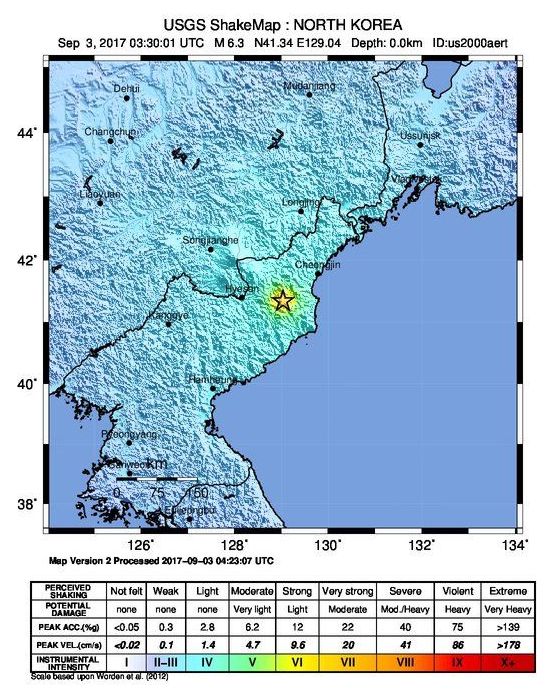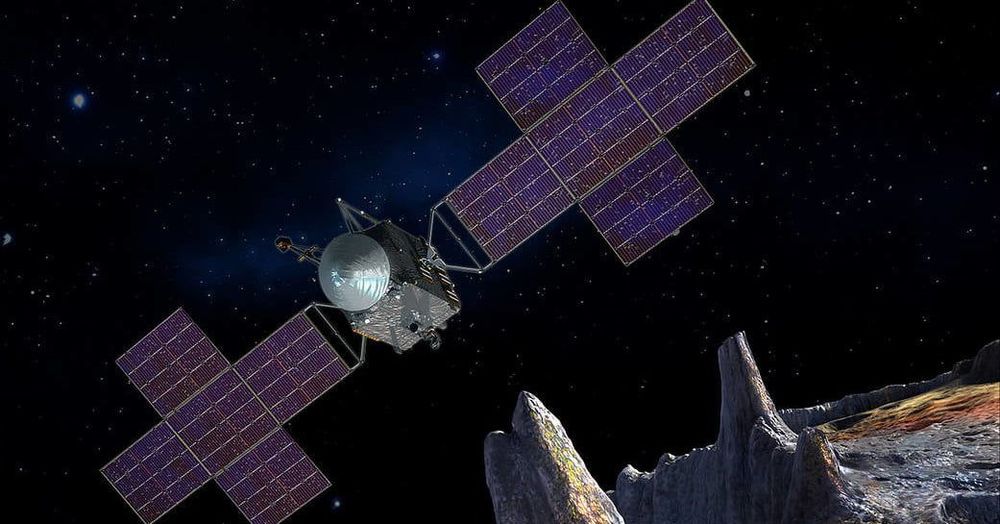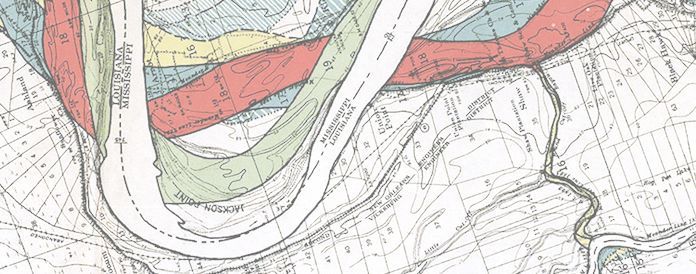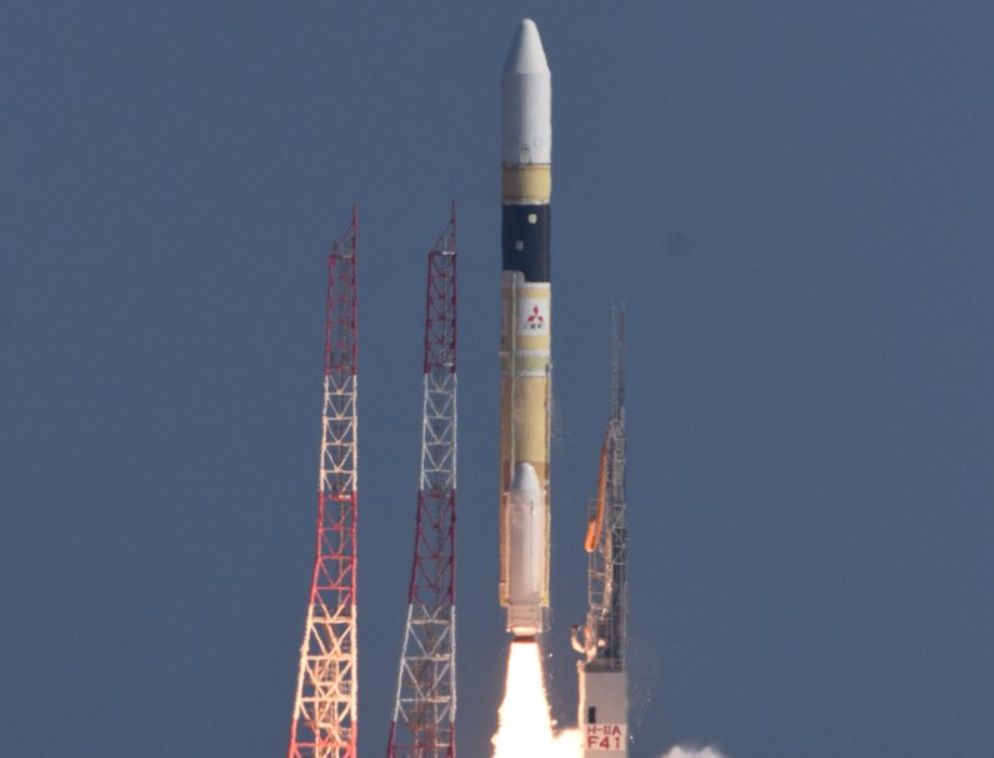North Korea conducted its sixth nuclear test on 3 September 2017, stating it had tested a thermonuclear weapon (hydrogen bomb).[6].


North Korea conducted its sixth nuclear test on 3 September 2017, stating it had tested a thermonuclear weapon (hydrogen bomb).[6].

40% of the world’s insect species are in decline, and scientists believe that a third are threatened with extinction. From pesticides to invasive species, there are various reasons, but any losses could have a major impact on our food systems.

We would like to thank the many people who provided comments to our last coronavirus update at https://www.facebook.com/groups/lifeboatfoundation/permalink/10158676889983455/.
You can comment on this update at https://www.facebook.com/groups/lifeboatfoundation/permalink/10158683233098455/.
Here’s a lot of new information:
WATCH THE CORONAVIRUS EVOLVE!
Hit play at https://nextstrain.org/ncov to watch the coronavirus evolve in near realtime. (The play button is on the geography part.)
CORONAVIRUS HAS EVOLVED INTO TWO MAJOR LINEAGES AND IT IS POSSIBLE TO BE INFECTED WITH BOTH, A NEW STUDY SHOWS
Read https://www.telegraph.co.uk/science/2020/03/04/coronavirus-h…cientists/ to learn how there are two main lineages of this virus and that the less dangerous version seems to be gaining on the more dangerous version.
Many of you know the sad news that theoretical physicist & mathematician Freeman Dyson has passed away, so in celebration of his life and achievements, Anders Sandberg (Future of Humanity Institute) discusses Freeman Dyson’s influence on himself and others — How might advanced alien civilizations develop (and indeed perhaps our own)?
We discuss strategies for harvesting energy — star engulfing Dyson Spheres or Swarms, black hole swallowing tungsten dyson super-swarms and other galactic megastructures, we also discuss Kardashev scale civilizations (Kardashev was another great mind who we lost recently), reversible computing, birthing ideal universes to live in, Meinong’s jungle, ‘eschatological engineering’, the aestivation hypothesis, and how all this may inform strategies for thinking about the Fermi Paradox and what this might suggest about the likelihood of our civilization avoiding oblivion. though Anders is more optimistic than some about our chances of survival…
Anders Sandberg (Future of Humanity Institute in Oxford) is a seminal transhumanist thinker from way back who has contributed a vast amount of mind blowing material to futurology & philosophy in general. https://en.wikipedia.org/wiki/Anders_Sandberg
Happy Future Day (march 1st) : http://future-day.org
Freeman Dyson: https://en.wikipedia.org/wiki/Freeman_Dyson
Dyson Sphere: https://en.wikipedia.org/wiki/Dyson_sphere
Aestivation Hypothesis: https://en.wikipedia.org/wiki/Aestivation_hypothesis
Reversible Computing: https://en.wikipedia.org/wiki/Reversible_computing
Kardashev Scales: https://en.wikipedia.org/wiki/Kardashev_scale
Nikolai Kardashev: https://en.wikipedia.org/wiki/Nikolai_Kardashev
Many thanks for watching!
Consider supporting SciFuture by:

NASA has contracted SpaceX to carry out the launch for its upcoming Psyche mission to a strange metal asteroid in our solar system. The launch will use one of SpaceX’s Falcon Heavy rockets, for a cost of $117 million.
“The Psyche mission will journey to a unique metal-rich asteroid, also named Psyche, which orbits the Sun between Mars and Jupiter,” NASA explained in a statement. “The asteroid is considered unique, as it appears to largely be made of the exposed nickel-iron core of an early planet — one of the building blocks of our solar system.” Astronomers believe that studying this unusual asteroid could help us to understand how planets develop, including planets like Earth.
“Deep within rocky, terrestrial planets, including Earth, scientists infer the presence of metallic cores, but these lie unreachably far below the planet’s rocky mantles and crusts,” NASA said. “Because we cannot see or measure Earth’s core directly, the mission to Psyche offers a unique window into the violent history of collisions and accretion that created terrestrial planets.”
Four years ago, Todd Rider was on top of the world. The MIT-trained bioengineer had developed a radical idea for killing viruses. Initial test results showed that his therapy, called DRACO, could kill every virus he threw it at: 15 viruses were killed in human cells, and two in mice.
It seemed like there was a chance it could be the biggest discovery in medicine since the invention of antibiotics. Enthusiastic headlines praised the potentially world-changing panacea. “Todd Rider Has a Kill Switch for Viruses,” wrote Bloomberg Businessweek. The Verge: “Killing sickness: is DRACO a doomsday device for viruses?” Time magazine declared it one of the top 50 inventions of the year.
Yet over the next few years, things started going wrong. Rider moved from lab to lab and says he couldn’t raise the money to continue testing DRACO, despite, he claims, the continued promise of the concept.
A team of scientists at MIT have developed a computer program that will help humans decide how to best deal with the end of the world, so long as that comes in form of a catastrophic asteroid collision.
Experts say there as many as two or three new asteroids, sometimes called ‘Near Earth Objects,’ discovered every night.
It’s inevitable that one of these asteroids will eventually end drifting into a collision course with Earth.

In this post, you’ll find why I think SENS Research Foundation (SRF) is great to finance from an EA perspective along with the interview questions I want to ask its Chief Science Officer, Aubrey de Grey. You are welcome to contribute with your own questions in the comments or through a private message. Here is a brief summary of each section:
Introduction: Aging research looks extremely good as a cause-area from an EA perspective. Under a total utilitarian view, it is probably second or third after existential risk mitigation. There are many reasons why it makes sense to donate to many EA cause-areas, such as to reduce risk, if there are particularly effective specific interventions, or if some cause-areas are already well funded.
SRF’s approach to aging research: SRF selects its research following the SENS general strategy, which divides aging into seven categories of damage, each having a corresponding line of research. This categorization is very similar to the one described in the landmark paper The Hallmarks of Aging. This sort of damage repair approach seems more effective and tractable than current geriatrics and biogerontology that are aimed at slowing down aging, as it enables LEV and many more QALYs. It makes rejuvenation possible instead of just slowing down aging as a best-case scenario, and it doesn’t require an in-depth knowledge of our metabolism, which is extremely complicated and full of unknown-unknowns.

Making its first flight in over a year, Mitsubishi Heavy Industries’ H-IIA rocket lifted off from the Tanegashima Space Centre on Sunday with a reconnaissance satellite for the Japanese government. Liftoff occurred at10:34 local time 01:34 UTC, during a five-minute launch window.
Sunday’s launch deployed the IGS Optical 7 satellite for the Cabinet Satellite Intelligence Centre, an agency of the Japanese government responsible for space-based surveillance. IGS Optical 7 is part of the Information Gathering Satellite (IGS) or Joho Shushu Eisei (JSE) system, consisting of spacecraft collecting optical and radar images of the Earth.
Japan began development of IGS in the late 1990s, following North Korea’s attempted satellite launch in 1998. Although the North Korean launch failed to reach orbit, the rocket carrying it crossed Japan during its ascent, sparking fears that North Korean missiles would be able to target the islands. With IGS, Japan aimed to develop an independent reconnaissance capability to monitor future threats. The constellation can also be used for disaster monitoring and other civilian applications by the Japanese government.